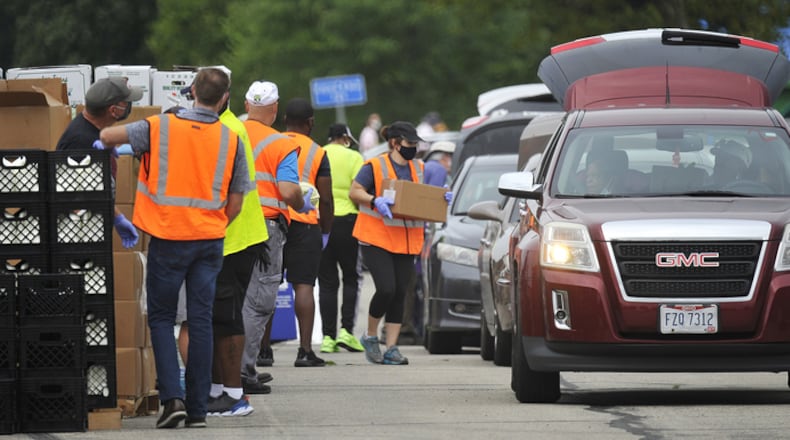Starting this week, the Foodbank will start mobile farmers markets every second Wednesday of the month from 10 to 11 a.m. at Living Word Church at 926 E. National Road and from 1:30 to 2:30 p.m. at Englewood Christian Assembly at 415 N. Main St.
These mobile farmers markets are open to anyone in need of food assistance, not just people who live in those communities, said Lee Lauren Truesdale, chief development officer for The Foodbank.
“The tornadoes and the pandemic created new pockets of hunger where people previously didn’t need food assistance,” Truesdale said.
This is the Foodbank’s second service gap map with UD. The map is created from data based on where people getting food from The Foodbank are coming from. UD plots where people live and where current Foodbank partners are operating.
“This helps us ensure there truly is a gap and then helps us meet the gap in that community,” Truesdale said.
Truesdale said The Foodbank would eventually like to get a partner food pantry into Vandalia and Englewood, but will keep the mobile farmers markets in those communities as long as needed.
The Foodbank is also working on creating a map and new services to address gaps in Greene and Preble counties. Truesdale said they would likely have plans in place to address gaps discovered there by this summer.
In The Foodbank’s service area, more than 106,000 people struggle with food insecurity. 32,750 of those were children. In Montgomery County, about 15% of people are food insecure. Last year, the Foodbank distributed 17.8 million pounds of food across Montgomery, Greene and Preble counties.
“The Foodbank believes in making charitable food assistance available to all. Our ongoing partnership with the University of Dayton and their GIS software service gap mapping project helps us identify areas where additional food resources are needed,” said Michelle Riley, Foodbank CEO.
Truesdale said food need is still high, but down from where it was this time last year, when thousands of people waited hours to get food from The Foodbank’s drive-thru at the beginning of the pandemic. The drive-thru continues to be the first stop for people in need when they don’t know where to go.
“We are still seeing some new families visit us,” she said. “We’ve stabilized at a higher than normal need across the community.”
About the Author

